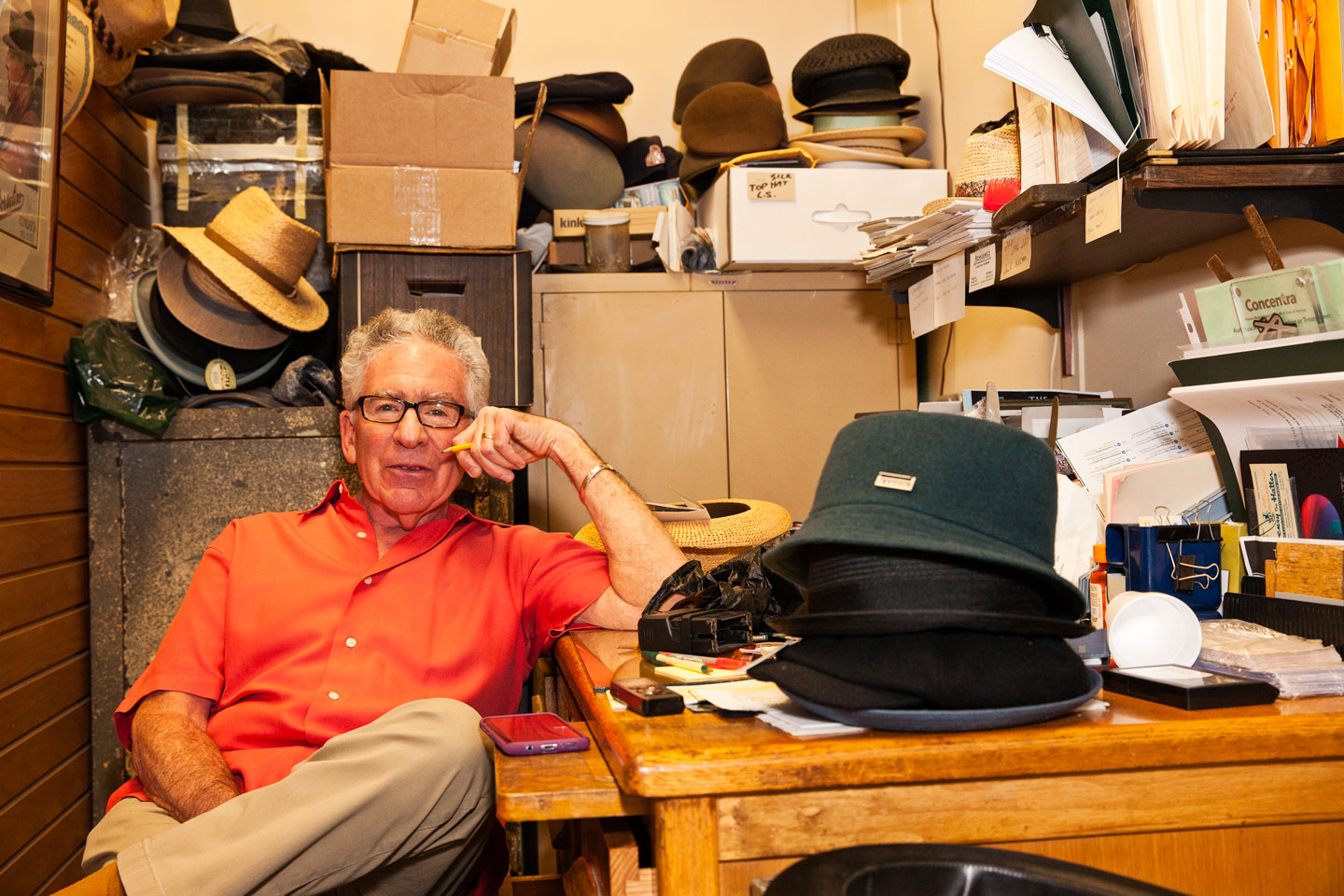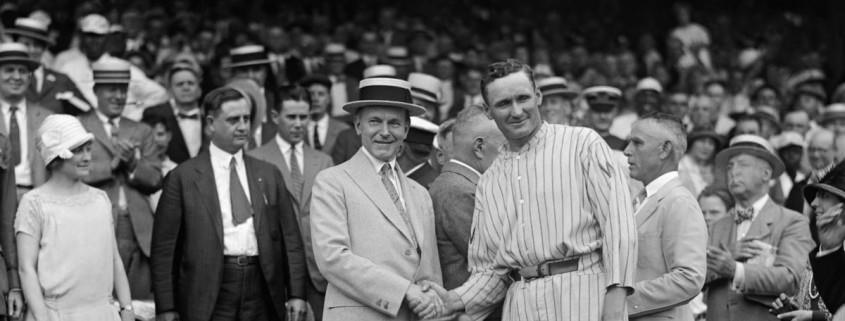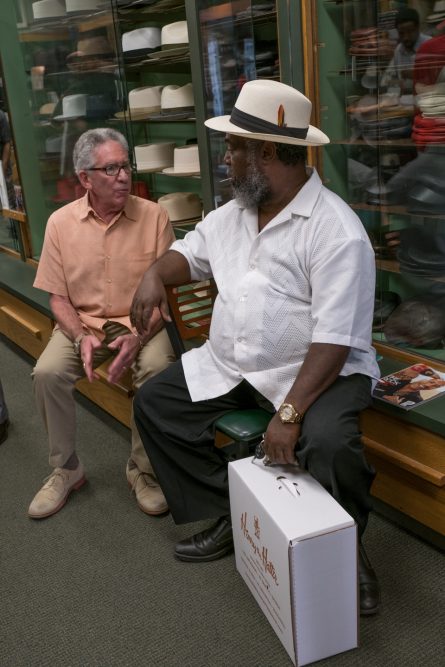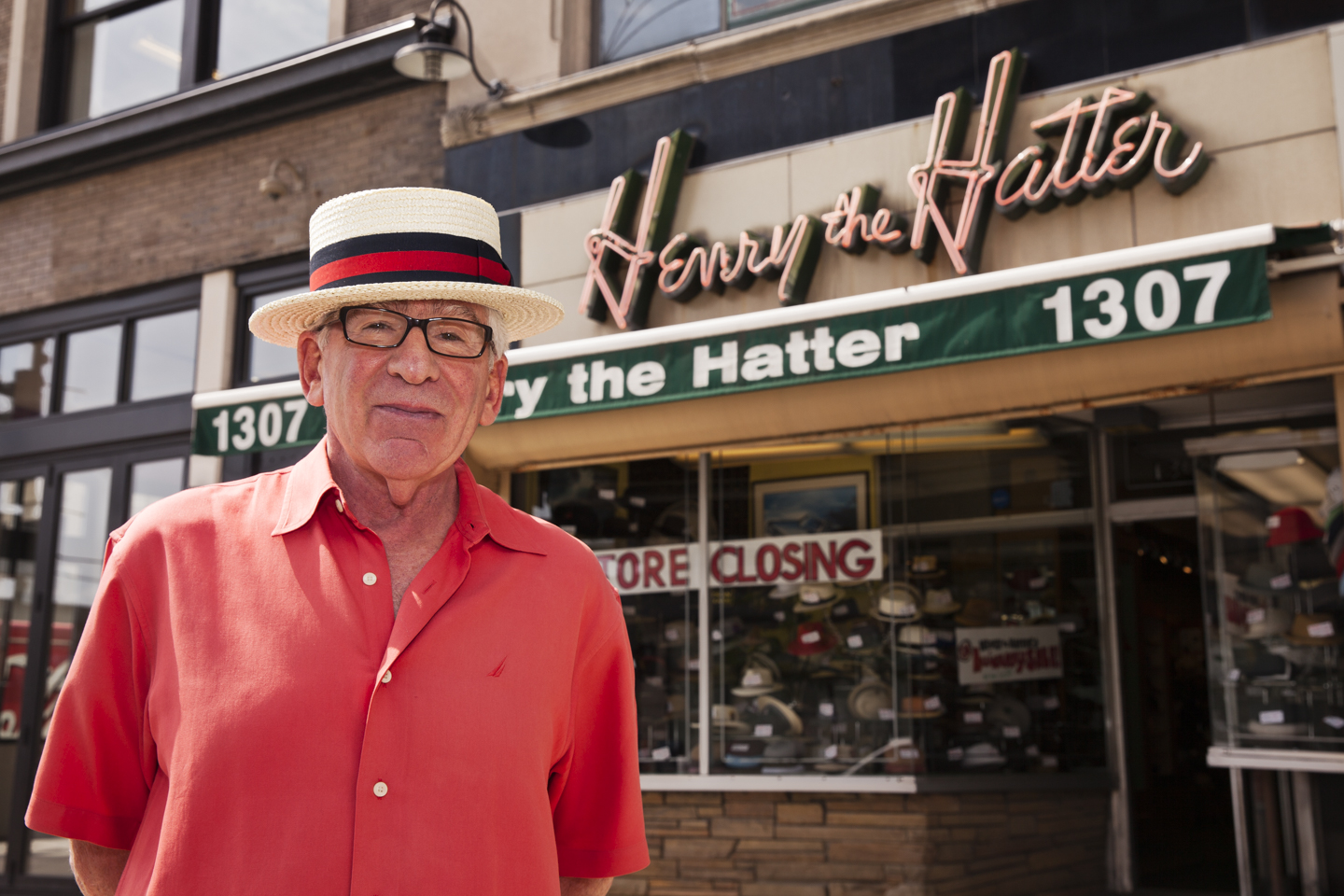by Vivian Henoch
“Sell the same hat to six people, and no two will wear it in quite the same way. A hat is a personal statement,” says Paul Wasserman. He ought to know. Paul is the owner of Henry the Hatter, Detroit’s iconic hatter, established in 1893 and recognized as the oldest hat retailer in the U.S.
Designated as a Michigan Centennial Business at 1307 Broadway and Gratiot, Henry the Hatter was a downtown landmark on the gentrified block that now sports retro sneakers, a yoga studio, chic bars and eateries and the 10-story graffiti-graced Z Garage. Recently, Paul lost the lease to the building – a vibrant spot where the store has served customers for 65 years.
“Not to worry,” says Paul. “Though we’ve closed our doors downtown, we’re still open for business at our Southfield store on West 10 Mile Road. And we’re coming back!” Weighing his options for a new downtown location, Paul has a short list of “absolute-musts” that include visibility, foot traffic and a place where customers from both the city and the burbs feel comfortable.

Whew! The search is on.
“I’m a glass-half-full kind of guy, and I’m not ready to retire,” says Paul, 70. “In our long history in the city, Henry the Hatter has survived three moves downtown and a fire. Hopefully, our next move (which certainly will be my last move) will place the store on solid footing for its future. I intend to transition the business to my manager, Joe Renkiewicz, who has been with me since January 1985. He’s the right guy to take over – the kind of guy when you ask him to do something, he’ll say, ‘Yes, I did that two days ago.’ Joe manages our Internet, does the mail order stuff and, in my book, he’s entitled. Joe is one of the reasons we are as successful as we are.”
So, who is Henry of Henry the Hatter?
Henry Komrofsky – the original “Henry the Hatter” – worked as a hatter in Detroit before opening his own shop in 1893. In 1904, Komrofsky hired a young assistant named Gustave Newman. They became partners in 1919, and the two ran the store together until Komrofsky’s death in 1941.
According to the story, Gustave and Komrofsky’s widow couldn’t stand the sight of each other. They were itching to get out of the business, and waiting for somebody – anybody – to come in, write a check and take them out of their misery running the store together.
That somebody was Paul’s father, Seymour (Sy) Wasserman, a young family man from Brooklyn.
Sy Wasserman, a WWII Vet with the brains to stay out of combat by editing the army newspaper and growing tomatoes in New Guinea, got into the hat business by a circuitous route. As the story goes, Sy’s uncle had a hat factory in Allentown, PA. There was a hat store called Brody’s on the Upper East Side in New York – in serious debt to the factory. By mutual arrangement between the factory and the store, Sy’s uncle put forth the offer that if Sy paid off the debt, he would own the store.
Sy’s store on the Upper East Store was a small fish in a big sea. Looking to expand – with no place to go in New York, Sy heard about an opportunity in Detroit.
Paul continues: “So my dad took the train from New York City to the station on Michigan Avenue, got into a cab and, knowing there were two locations for the store, asked the driver to take him to Henry the Hatter, purposely omitting the address. When the cab driver asked, ‘Which one?’ without asking for directions, my dad took it as a good sign that the store was a viable enterprise. Long story short, my dad bought the store. On the spot. Without consulting my mother back in Brooklyn. I was an infant, and my mom was pregnant with my sister, and the last thing she wanted to do was move to Detroit. But here we are.”
Explaining how the name of the store fit the Wasserman family, Paul continues. “You know in Judaism, you are named after a relative who is no longer living. I was born in 1947 and my dad didn’t know the store existed until 1948. Call it coincidence. Or destiny. My middle name is Henry after my maternal great grandfather. From the very start, it seems that Henry the Hatter was beshert for our family.
A lifetime in hats, looking back, looking forward
If walls could talk, Henry the Hatter’s glass-cased, hat-lined and mirrored interiors would certainly chatter. We meet with Paul at the store on a Wednesday morning, just 10 days before Henry’s downtown is scheduled to close on August 5th. Finding his own measure of closure, Paul notes that the date marks what would be Sy Wasserman’s 101st birthday.
As the first few of a steady stream of customers walk in to the shop, Paul observes. “The month of July has been a blur. We’ve been gifted with a second Christmas this year, as business has been extremely good. Since the news broke that we’re closing, people are coming out in a show of support. It looks like we won’t have a lot of inventory to carry over.”
Seated in the “corner office” (literally no larger than the desk where his father’s hats still hang on the wall with displays of old photos, news clips and other memorabilia), Paul reflects on all the years, all the famed customers, all the signature hats that have passed through his store.
myJewishDetroit: What are your earliest memories of working in your father’s store?
When I was a young kid – any day I wasn’t in school, I liked to get up early and come downtown to make a nuisance out of myself in the store. I was curious, reckless and I broke everything I put my hands on. The people who were really working here couldn’t wait to see me go. They’d fix everything I broke and wait for me to come the next time.
One thing that I’ve never broken: I still have the coffee cup my dad used; it’s around here somewhere. My son, Zachary, liked to use it whenever he was in the store.
myJDetroit: Is your family still in the business?
Zach, 29, worked with me for a while, but we both decided it would be better for him to do something else. So now he’s an EMT, working on his certification as a Physician’s Assistant. He also happens to be a world-class bridge player. My wife, Cathy, recently retired from Jewish Family Service (JFS) where she worked for many years as a geriatric social worker and program case worker.
myJDetroit: Where did you grow up?
I was born in Brooklyn, but I consider myself a Detroiter. I grew up in Northwest Detroit, attended Detroit Public Schools from K through 12. My family lived in an apartment called the Blackstone Manor, a building still on Schaefer Highway south of 8 Mile. Our first home was at Mendota and 7 Mile; we then moved to Hartwell Street.
I have wonderful memories growing up in Detroit. Like every Boomer will tell you, I remember you never had to lock your door, you came home when the street lights came on, you were never in front of a TV or computer screen – too much to do outside, you were bike riding, playing baseball. There were never enough hours in the day because there was so much to do. All the neighborhood kids were friends.
myJDetroit: When did you start working for your father?
I was not much of a student. I got summarily thrown out of Eastern Michigan University for a 0.2 grade average, went to Oakland Community College and finished one semester short of a degree – focusing mostly on not going to Vietnam. As you might imagine, when I went to work for my dad in 1972, we had a rocky beginning. It was the usual: my dad “didn’t know much of anything,” never understood what I was talking about. It was amazing how he let it all roll in one ear and out the other. The older I got, the smarter my dad got. I have to give him all the credit: the reason we’re still in business is because he was such a great teacher.
myJDetroit: Of all the styles of hats sold at Henry the Hatter over the years, what do you consider to be the most iconic?
I’d say it’s the sailor straw (also called the boater or skimmer). Back in the day, you wouldn’t put on a straw hat prior to Memorial Day, and couldn’t wear one after Labor Day. The sun would turn the straw hats to faded colors, so on Labor Day in baseball parks, the men in the stands would take their hats off after the game and sail them like Frisbees into the infield – hence the name “sailors.” There are vintage photos of huge mounds of hats left for the groundskeepers to clean up.

myJDetroit: Who are some of the celebrities who have come to shop at Henry the Hatter?
Our most famous customer was President Dwight D. Eisenhower who broke the tradition of wearing a top hat at his inauguration in favor of a homburg – the more affordable option and a symbol of austerity. The President never personally shopped in our store. But somehow through a connection my father had with James Farley – a prominent politician from New York – Eisenhower wore one of our homburgs for his second inauguration in 1957.
Our celebrity clientele has included congressmen, mayors, judges, athletes, musicians, actors and entertainers of all sorts. Offhand, I can name John Dingell, Carl Levin, Dennis Archer and Coleman Young. Jeff Daniels the actor is known to stop in; Kid Rock goes back 20 years with us, shopping here before anyone knew who he was. And five years ago, we did a project with Hank Williams Jr. who was working on an album as a tribute to his father and wanted a custom-made Stetson like his dad used to wear.

myJD: So many years, so many stories . . . what will be your greatest takeaway from your downtown store?
Believe it or not, my greatest takeaway is all the thanks I’ve received over the last couple of weeks. The outpouring of love from our customers have shown us has been positively overwhelming. I had no idea what to expect when we announced our closing. I figured our story would be covered by limited media and it would be over and done with. But the response from residents in the city – along with all the support we’ve had in the hunt for another location – has been heartwarming and has really validated my last 45 years in retail. What more can I say than “stay tuned?”




